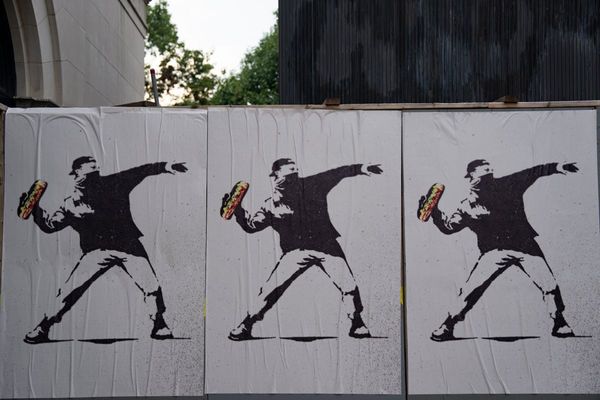It's 6:00am on a cold winter's day in Adelaide, and Graeme Denton is being cautiously watched by a small group of people in a primary school hall.
By day Mr Denton performs in the Scientifibubble Show as Marty McBubble.
His love of bubbles has brought him here.
"Every bubble is different, and when you get the big bubbles they aren't just spherical, they are affected by a heap of factors," he said.
Creating the perfect giant bubble
In front of Mr Denton is a tray filled with his secret soap bubble recipe.
In his hands are two large wands with a special type of modified string used to lift the liquid.
Looking on are a local justice of the peace, his official witness, and a professor of applied mathematics who will measure the volume of what could be a world record bubble.
There is a lot of science behind creating the perfect bubble, including very specific weather conditions.
High humidity, cold temperatures and a light breeze all help to form and hold bubbles.
"It's actually harder to make a bubble inside as the humidity doesn't transfer completely to inside," Mr Denton said.
The whole process takes just 8.3 seconds, with the bubble lasting for a split second.
Mr Denton ran several trials, with one bubble chosen for submission.
Chasing a volume of 8.5 cubic metres, he blitzed it with a bubble of 19.8 cubic metres.
How do you measure the volume of a bubble?
Creating a bubble is one thing; measuring it is a completely different challenge.
The film of a bubble is about 1/4000th of an inch thick.
"It's a series of little things that make it hard," Professor Matt Roughan said.
A professor of mathematics at the University of Adelaide, and a member of the ARC Centre of Excellence for Mathematical and Statistical Frontiers, Professor Roughan was charged with calculating the volume of the bubble.
"The hardest thing was coming up with a model for the type of bubbles that Graeme produced," he said.
When bubbles grow in size, they distort from the basic spherical shape and take on a life of their own.
"The maths is actually really easy," Professor Roughan said.
By using two processes known as linear transformation and integration, Professor Roughan was able to calculate the volume of the bubble from a series of photographs.
"The challenging bit is coming up with the mathematical description of the thing you want to integrate," he said.
"It took less than a week to get it all done."
Professor Roughan said he hoped the bubble title would spark interest in the mathematics behind the record.
"Mathematics is a real key component to science and it can actually be fun as well," he said.
The next feat?
Mr Denton said he was still amazed by what he had been able to achieve.
"It's one of those things that you look at and think it shouldn't work, but somehow it does," he said.
As he returns to creating smaller bubbles for his educational show, he casually eyes off other records.
"Maybe down the track I might look at the outdoor record, but at the moment I'm very happy with this one," he said.







